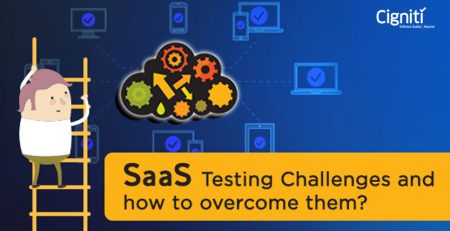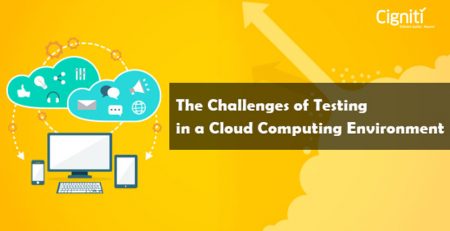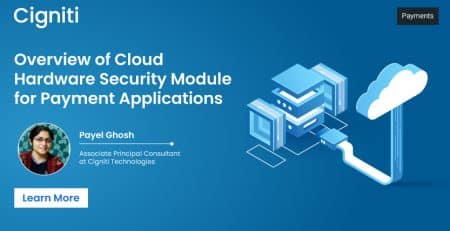The top cloud trends to embrace in 2021
Cloud offers extreme flexibility and ‘anywhere access’ to the required data. This flexibility factor of cloud computing became one of the major facilitator of the remote working model.
Cost efficiency, scalability, and ease of collaboration are some of the other main benefits that have made cloud a major hit amongst the businesses all over the world. And during the pandemic, cloud became the savior that enabled organizations to achieve business continuity despite not being in the usual office setting. If not for cloud, it would have taken several months for organizations to enable a remote workforce instead of a few weeks.
Last year’s Cloud Computing Study released by IDG had noted acceleration in cloud adoption with about 81% of the survey respondents already using computing infrastructure or having applications in the cloud. This upward trend has skyrocketed during the lockdown period.
Cloud computing, before the pandemic, still remained a business choice for organizations. But now, it has become the means for survival, sustainability, profitability, and business continuity. As the majority of organizations are already en route the cloud way, there will be no looking back here onwards. By next year, as much as 32% of the IT budgets will be dedicated to the cloud.
Noting the criticality of cloud in leading the digital-first, and probably remote-first workforce of the future, leading analysts have recognized cloud computing among the top technology predictions for 2021.
Let’s look at some of the major cloud computing trends and predictions for 2021, as listed by the analysts like Gartner and Forrester:
1. A cloud-led recovery from the pandemic
In the recently released ‘Forrester Predictions 2021’ report, the analyst has acknowledged the integral role of the cloud in recovering from the impact of the COVID-19 pandemic.
They predict that about 30% of the firms will continue to accelerate their spend on cloud, security and risks, networks, and mobility. To gain a competitive advantage, cloud-first and platform strategies will become the primary choice for the leading CIOs.
Forrester had previously predicted that the public cloud market infrastructure would grow 28% to reach $113.1 billion in 2021. However, considering the sustenance of strong revenue growth for the four largest public clouds, they changed their prediction to the growth of 35% to $120 billion in 2021.
2. Prioritizing speed and customer experience with cloud
The impact of the pandemic has caused global organizations to rethink their business strategies. Consequently, they prioritized speed and customer experience over cost savings and efficiency, which led them to adopt a public cloud infrastructure.
The adoption of cloud will spike in 2021, predicts Forrester, and will yield even greater enterprise adoption, cloud provider revenue, and business value.
3. Edge is the new cloud
Forrester expects that in 2021, new business models will emerge to facilitate the deployment of edge, efforts by cloud platforms to compete, and AI and 5G facilitating the expansion of edge use cases.
As the edge innovation market is heating up, buyers will shift their cloud strategies toward edge computing to capture the innovation and become more connected.
4. The distributed cloud model
Gartner has acknowledged distributed cloud as one of the top technology trends for 2021.
A distributed cloud has geographically dispersed infrastructure, which helps tackle the needs of performance, redundancy, and privacy regulations. With a distributed cloud computing model, organizations can leverage the benefits of public cloud without spending a fortune on the complex private cloud solutions.
Gartner notes the following styles of distributed cloud:
- On-premises public cloud: This is a popular vendor offering, but it offers only a fraction of the provider’s full suite and remains relatively immature.
- Internet of Things (IoT) edge cloud: Distributed services that interact directly with edge devices.
- Metro-area community cloud: The distribution of cloud services into nodes in a city or metro area connecting to multiple customers.
- 5G mobile edge cloud: The delivery of distributed cloud services as part of a 5G telco/carrier network.
- Global network edge cloud: The delivery of cloud services designed to integrate with global network infrastructure such as cell towers, hubs, and routers.
Stay on top of the cloud
‘Anywhere operations’ is another top tech trends of 2021 in the Gartner report. It constitutes an IT operating model that is designed to support customers everywhere, enable employees everywhere, and manage the deployment of business services across distributed infrastructure. To make this technology a norm in the upcoming year, cloud and edge computing will play an indispensable role. Gartner recognizes the distributed cloud, the IoT, API gateways, AI at the edge, and edge processing as part of the fundamental structure for this trend.
Cigniti’s team validates whether or not your cloud deployment is secure and gives you actionable remediation information when it’s not complying the standards. The team conducts proactive, real-world cloud-based security tests using the same techniques employed by attackers seeking to breach your cloud-based systems and applications. We deliver a variety of reports that verify your cloud security posture and provide actionable intelligence to help you quickly prioritize and remediate any exposures.
Schedule a discussion with us to consult with our experienced team of cloud testing experts.





Leave a Reply